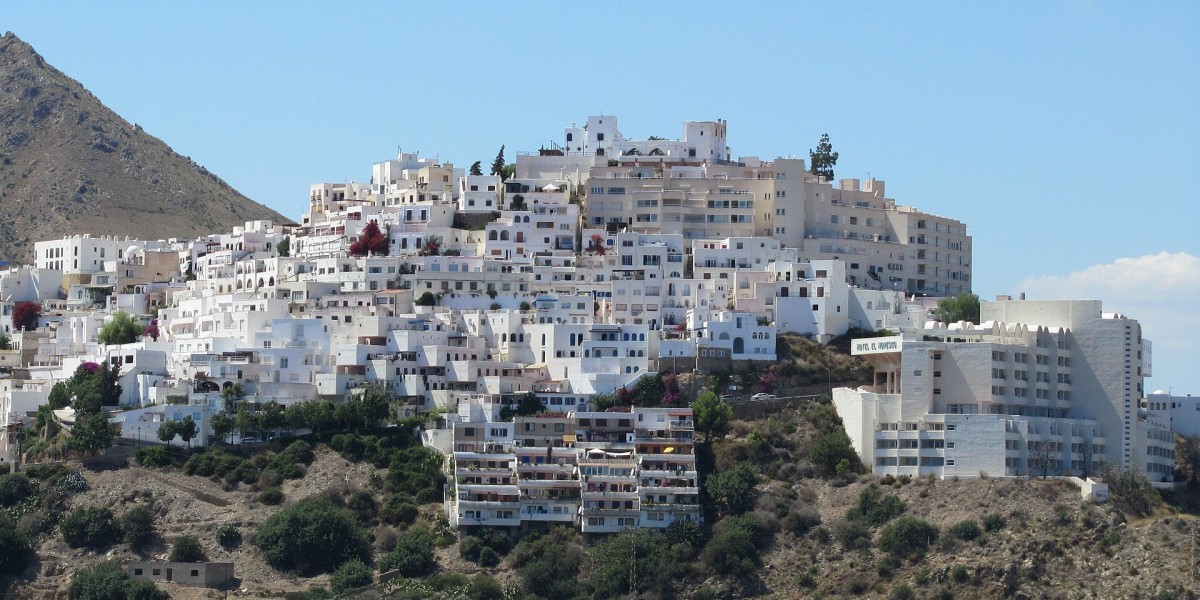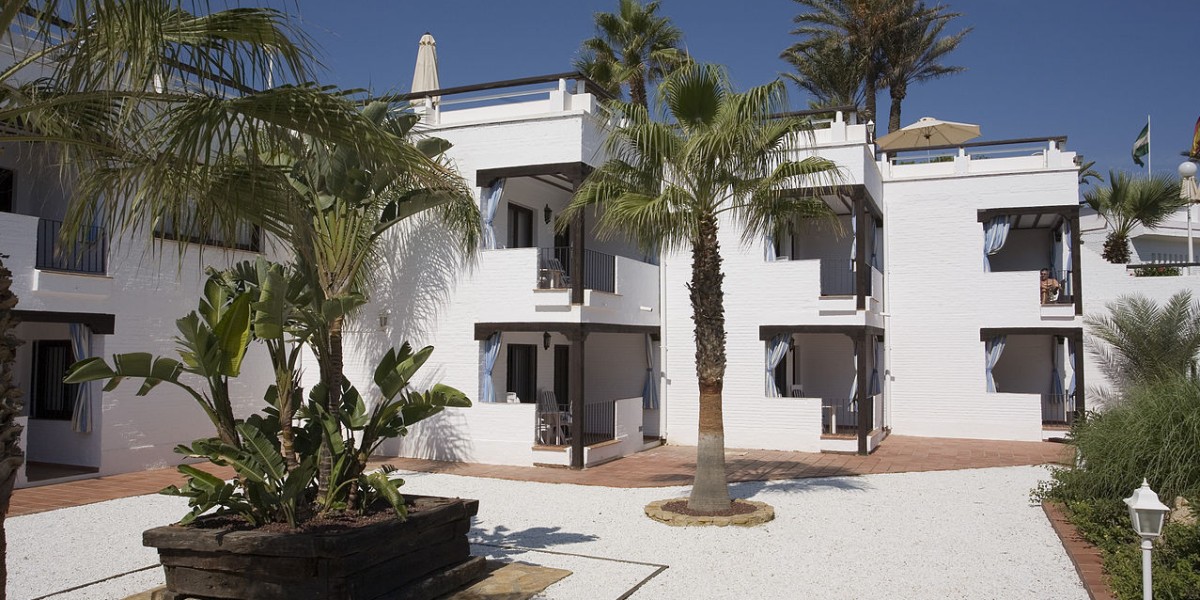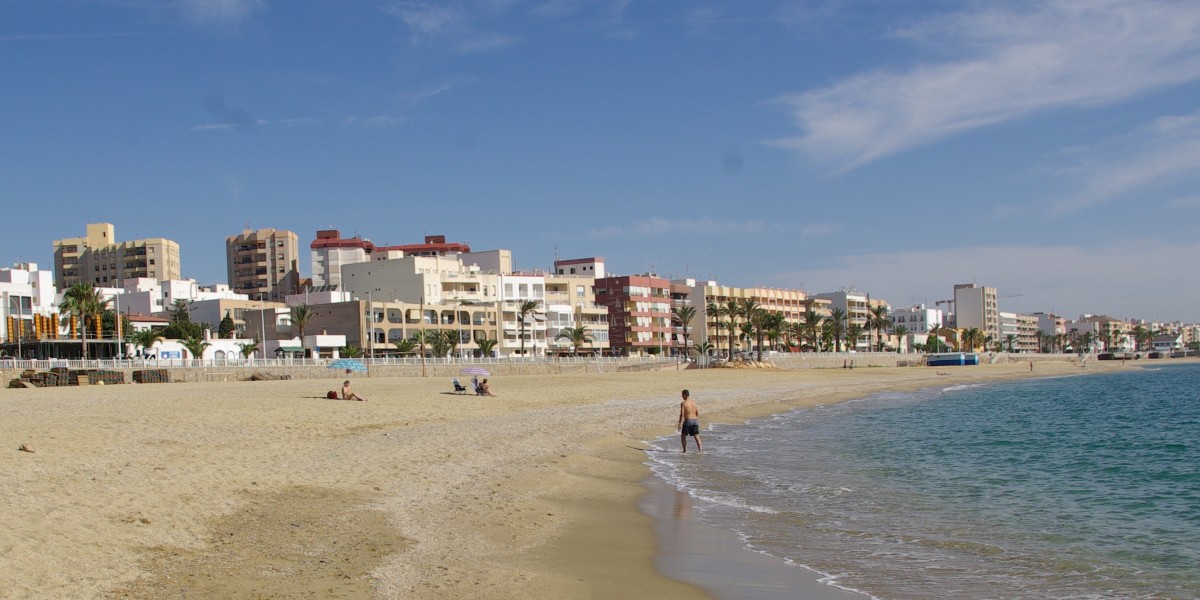
Mojácar really gets under the skin in the best way. Think sugar-cube houses tumbling down a hillside into a long strip of sand, proper tapas culture and a pace that lets you breathe. It’s a small town with a big expat community, mostly British and Northern European, so settling in tends to be straightforward.
What is it like to live in Mojácar?
Living in Mojácar blends the photogenic hilltop old town with a long, low-rise coastal strip. The pueblo gives you whitewashed lanes, Moorish touches and knockout views, typical of Andalusia's beautiful white villages. The beach, on the other hand, is about daily swims, beach chiringuitos and sunset strolls.
Transport is decent for a coastal town. You've got quick access to the A‑7, local buses linking Mojácar Pueblo, Mojácar Playa and Garrucha, and regional services towards Almería.
Day to day, you’ve got supermarkets, bakeries, banks and a post office on the playa, plus weekly street markets in Mojácar and nearby Garrucha. Healthcare is covered with local clinics and pharmacies, while larger hospitals are in Huércal‑Overa and Almería.
For leisure, water sports and paddleboarding run along the shore, and there are heaps of inland trails that climb into the Sierra Cabrera.
Food is a highlight in this part of Spain, as seafood is king, and the area is proud of its gambas rojas from Garrucha.

Mojácar's best areas
Mojácar breaks neatly into the hilltop pueblo and several beachside zones. The north is quieter and closer to Garrucha and golf at Marina de la Torre. The south gets longer beaches and more holiday services. Expats tend to cluster along the beachfront, with families often favouring calmer stretches.
Mojácar pueblo
The historic heart on the hill. Narrow lanes, white façades, viewpoints and small squares give it a slow rhythm and bags of atmosphere. Fewer cars, cooler evenings in summer and lovely sunrise-to-sea views. Homes are character flats and townhouses.
Pueblo Indalo-Ventanicas-El Cantal
Southern beach living with long sandy strands, beach bars and an easy social scene. You’ll find apartment complexes, some with pools, and year-round services. It’s the most “holiday” part of town, which means summer buzz and winter quiet. Great if you want everything on foot and a sea swim before breakfast.
- Properties for sale in Pueblo Indalo-Ventanicas-El Cantal
- Rental properties in Pueblo Indalo-Ventanicas-El Cantal
El Palmeral
Mid‑playa and popular for full‑time living. Wide, palm-lined avenues, access to supermarkets and cafés, and a calmer feel than the nightlife pockets. Good for families and digital workers who want space, parking and steady services with the beach a short stroll.
Cost of living in Mojácar
The cost of living in Mojácar is relatively affordable compared to other coastal towns in Spain. As of September 2025, property prices in Mojácar averaged around €2,291 per m², while rental prices stand at €9.3 per m².
As a rough guide, think €12–15 for a menú del día, €3-4 per tapa and €45–55 for a mid‑range dinner for two without wine. An espresso is usually €1.40–1.80, a small beer by the beach €2.50–3.50 and a glass of wine is €2.60, max €4.
A single person’s weekly shop typically comes in around €45–60 if you mix supermarkets with local produce. Local bus tickets are about €1.30–1.70, and petrol sits roughly in line with the Spanish average.

Price comparison: Mojácar, Garrucha or Vera?
When considering moving to a new location, the cost of living is a crucial factor influencing your final decision. Mojácar, with its Andalusian charm, is often compared to nearby towns.
Living in Mojácar vs Garrucha
Garrucha is a compact seafront town with a working port, a proper paseo and brilliant seafood spots. Housing runs cheaper. In July 2025, property prices in Garrucha averaged €1,436 per m².
Day-to-day, Garrucha has year-round services, good value cafés and a lived‑in feel. Nightlife is lower‑key than Mojácar’s summer season, and beaches are narrower but right in town.

Living in Mojácar vs Vera
Vera and Vera Playa spread inland and along a long, open coastline. Property in Vera is generally more affordable than in Mojácar, averaging €2,193 per m² in September 2025. It has a larger number of residential areas and is situated further inland.
When it comes to other expenses, such as food and services, Vera and Mojácar are quite similar. However, Mojácar offers a wider range of recreational activities and cultural events, which may contribute to higher monthly expenses.
The naturist zone in Vera Playa is a distinct micro‑market by the beach. Services are solid year‑round, and the vibe is quieter outside of summer.
Pros and cons of living in Mojácar
Living in Mojácar has its pros and cons, just like anywhere else. This charming Andalusian town offers an exceptional quality of life thanks to its climate and cultural atmosphere.
Some of the pros of life in Mojácar include:
- Sunny microclimate: one of Almería’s driest corners, with mild winters and long beach seasons.
- Coastal lifestyle with nature on the doorstep: sea swims before work, hikes in the Sierra Cabrera, and day trips to Parque Natural de Cabo de Gata‑Níjar.
- Welcoming international scene: English is widely understood in services on the playa, with plenty of social clubs and activities.
A couple of potential downsides:
- Seasonality: summer crowds push up short‑term prices and make parking tricky near the beach; some places reduce hours in winter.
- Limited big‑city services: for major hospitals, large shopping centres or niche international schools, expect to drive to Almería, Murcia or Alicante.

Stay in the know about living in Spain as a foreigner—get our weekly newsletter for the latest travel, legal, and lifestyle news.
For a taste of the high life, sign up for the monthly luxury market round-up.
